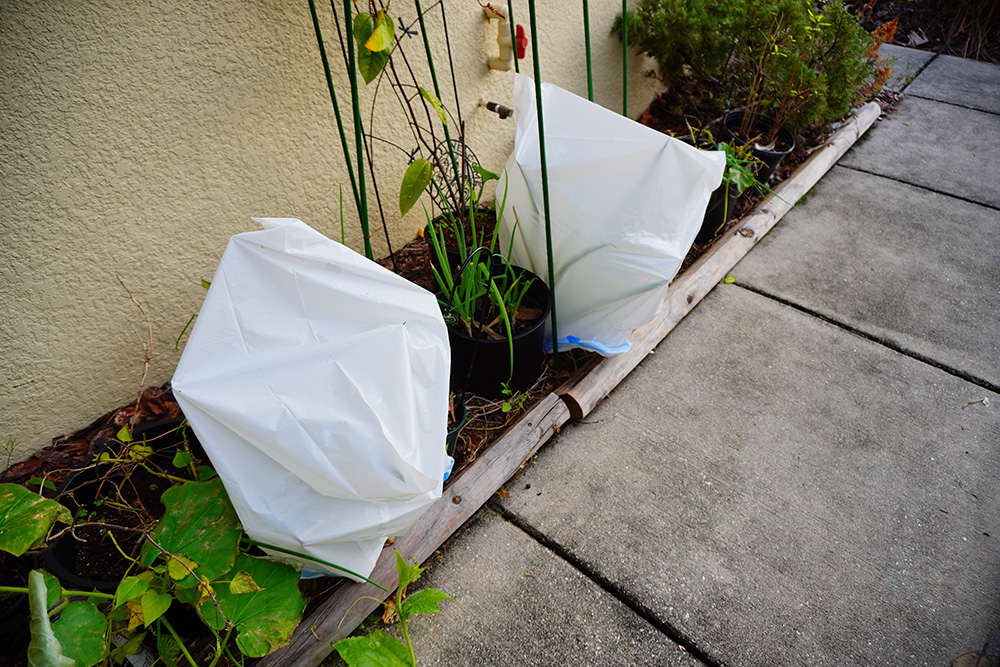
Texas A&M AgriLife Extension Offers Expert Tips on Protecting Your Garden from Winter Freeze
As the historic winter storm approaches the Greater Houston Area, residents are gearing up to protect their plants from potentially damaging frost and freeze. Daphne Richards, County Extension Agent-Horticulture with Texas A&M AgriLife Extension, offers expert strategies for keeping your garden safe during the cold months.
Understanding Frost and Freeze Damage
Before discussing protective measures, it’s important to understand the science behind frost and freeze damage. Richards explains that freezing temperatures cause water inside plant cells to form ice crystals, which puncture cell walls. When temperatures rise again, the plant cells leak fluids, resulting in plant tissues that turn black, brown, and eventually die. Frost forms on plant surfaces when temperatures drop just below freezing, freezing water vapor on exposed surfaces. A freeze refers to prolonged exposure to temperatures below freezing, often accompanied by wind.
"Plants often show signs of freeze damage through dark, water-soaked tissues, which later turn dry and brittle," Richards says. "Understanding how frost and freeze work will help you prepare your garden for these events."
Mobile Sidebar Ad
Watering Before a Freeze
One of the first steps in preparing your plants for freezing temperatures is to water them several days before the storm hits. Richards explains that watering reduces drought stress, making plants more resilient to cold. Furthermore, water acts as a "heat sink," slowly releasing warmth during the night. "Watering helps keep the soil temperature stable, offering extra protection against a marginal freeze," Richards notes.
In some cases, sprinkling plants lightly before or during a freeze can also help, but this technique works best under certain conditions. "As water freezes on the plant, it releases heat, preventing the plant’s temperature from dropping below 32°F," she says. "However, it’s crucial not to stop sprinkling once temperatures rise above freezing, or the ice could cause further damage."
Covering Plants
The most common and effective way to protect plants from cold weather is by covering them. Richards warns, however, that simply placing a blanket over a plant may not be enough. "Covering helps trap heat radiating from the soil, not the plant itself," she explains. "It’s essential to ensure that the cover reaches the soil and is secured to prevent heat from escaping, especially on windy nights."
For effective coverage, use materials such as sheets, blankets, or frost blankets. Avoid plastic sheeting that directly touches the plant, as it can cause frost burn. "If using plastic, place it over a layer of cloth or fabric to protect the plant from direct contact," Richards advises. "Lighter materials like spunbound polyester work well, but heavier options offer better insulation."
Mobile Sidebar Ad
Adding Heat Sources
In particularly cold conditions, Richards suggests adding a heat source beneath the cover. "Christmas lights or mechanic’s lights provide a small amount of warmth," she explains. "Just be sure to use the larger, heat-producing bulbs, and avoid allowing them to touch plant tissues directly to prevent burns."
Another heat-providing technique involves using containers of water placed under the covers. "Milk jugs or five-gallon buckets filled with water can act as heat sources for small plants, providing a gradual release of warmth through the night," Richards adds.
Soil and Mulch Protection
Soil and mulch are also vital to keeping plants safe from the cold. Richards recommends mulching around tender perennials to insulate them and protect their roots. "A thick layer of mulch, such as hay or composted bark, can help trap heat from the soil and prevent frost from damaging the plant’s crown," she says. "Just be careful not to overdo it—too much mulch can suffocate the plants."
For trees, particularly citrus, Richards advises mounding soil around the base of the trunk. "This provides extra insulation and helps protect the lower trunk, which is often the most vulnerable part of the tree during a hard freeze," she explains.
Mobile Sidebar Ad
Protecting Container Plants
Container plants are especially susceptible to cold, as their roots are exposed to the air and lack the insulation provided by the ground. Richards suggests moving container plants to a sheltered location, such as a garage or shed, to protect them from the cold. If moving them is not possible, cluster the pots together in a protected area, such as the side of a house, and cover them with blankets or tarps for extra warmth.
Wrapping It All Up
While gardeners cannot control the weather, they can take proactive steps to protect their plants from frost and freeze damage. "With a little planning and care, you can extend your growing season and give your plants the best chance to thrive through the winter," Richards says. "Winter protection techniques such as watering, covering, adding heat, and using mulch can make a significant difference in your garden’s survival."
By using these expert tips, gardeners can shield their plants from extreme winter weather and emerge with healthy, thriving gardens come spring.
 Tiffany Krenek has been on the My Neighborhood News team since August 2021. She is passionate about curating and sharing content that enriches the lives of our readers in a personal, meaningful way. A loving mother and wife, Tiffany and her family live in the West Houston/Cypress region.
Tiffany Krenek has been on the My Neighborhood News team since August 2021. She is passionate about curating and sharing content that enriches the lives of our readers in a personal, meaningful way. A loving mother and wife, Tiffany and her family live in the West Houston/Cypress region.


